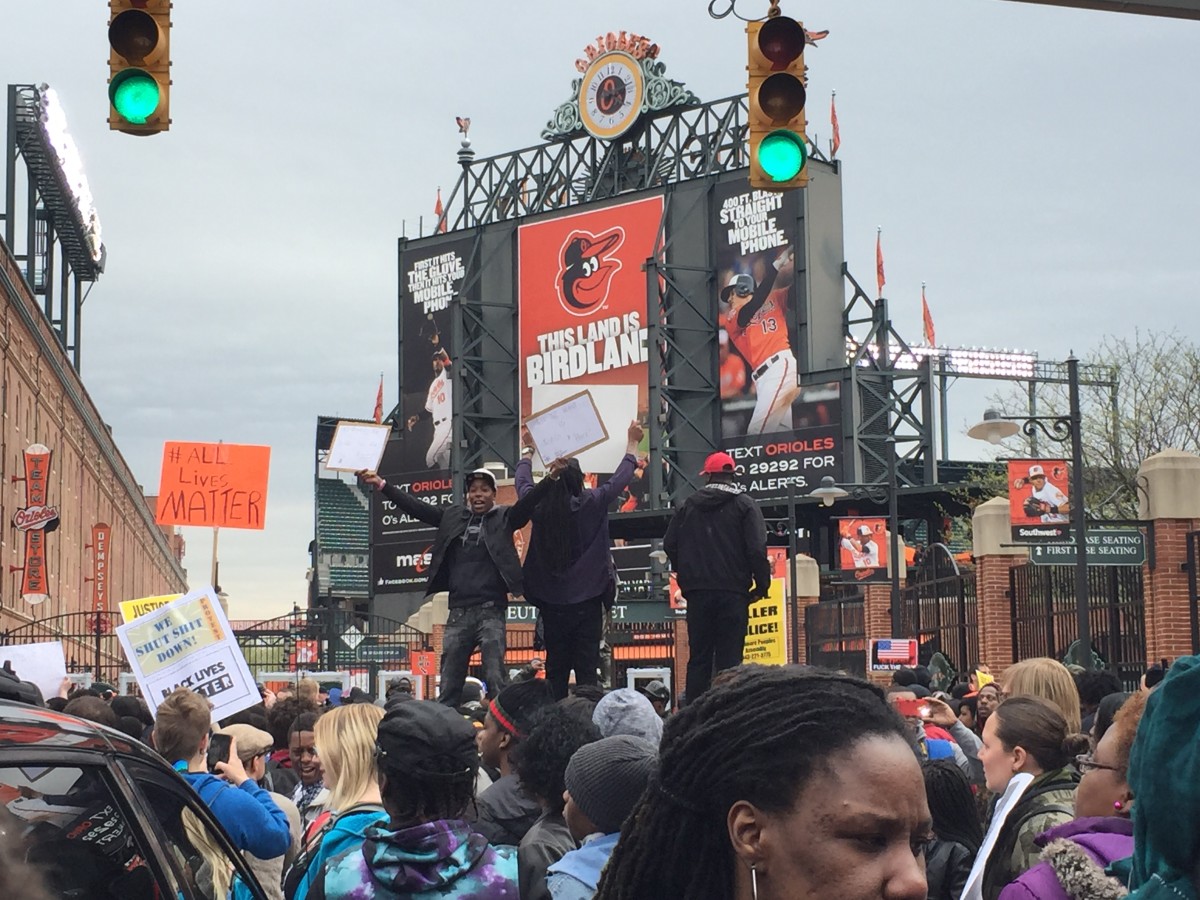On the day after the CVS burned, Elijah Cummings stood on the corner of Penn and North with a bullhorn.
It felt like one of the first moments of pause after a sleepless night. From the time the confrontation started between students and police at Mondawmin, this reporter crisscrossed the city on April 27, 2015, to report on fires and survey the damage to shops that erupted after the funeral for Freddie Gray. By daybreak, the surreal scene of driving down Pratt Street past a long line of National Guard troops in front of Inner Harbor made it feel like things would be different going forward.
Yet seeing Cummings stand under the morning sun and offer words of hope, while a shopkeeper swept up debris, felt like a sign that there was a way to move forward in whatever this new life would be.
The eyes of the world were on Baltimore then. And in those hours, it had already become clear that they were focused just as much on Gray’s death and push for justice as they were on the life that he and others lived in the underinvested, predominantly-Black neighborhoods of Baltimore where racist policies set in past generations created disparities that only widened over time.
It was an awakening within the city, as well. A rally the next week gathered people from across Baltimore to City Hall, and they marched back to the corner of Penn and North. After a week of curfew, it felt like it had been a year since the intersection was covered in smoke and tear gas. In the following months many were galvanized to think about how they could help, and call more loudly for change. Starting from supply donations organized in the immediate aftermath, the voices coalesced into new centers and initiatives to work for systemic change: repairing the broken relationship between the community and the police, creating more opportunities for youth, workforce development and expanding access to food and housing.
That work touched the whole city, and so even from within our niche at this publication we covered the efforts that sprang up from within to build “A Connected City” and the organizations from outside that put down roots in the city to offer opportunity.
Now it’s the fifth anniversary of that day of Gray’s funeral. Though some of those efforts are still making lasting contributions, others have faded. The leaders at the forefront, too, are different now. To take the morning-after scene at Penn and North as one example: Cummings has sadly passed away, and former mayor Catherine Pugh, who stood beside him on the street that morning, is now set to go to jail for her crimes committed while in office.
It’s also another moment of crisis, and many of the problems exposed last time are coming to the fore once again.
Beyond orders to stay home and masks, it is once again a time that is showing the divides between the city’s “haves” and “have nots.” From the deeper toll being inflicted by the virus on Black Marylanders to the fact that many “essential” workers are folks who ride the bus to hourly jobs, disparities along the lines of race and class are just as present in the pandemic as they were in the Uprising.
Yet the spirit of that time also lives on. Like then, there has been an immediate response that seemed to spin up overnight. As the reality sets in, newer efforts can seek sustained change, working alongside those who have been committed for years. While this journalist was reporting a piece on efforts to bridge the digital divide, many of the interviewees harkened back to the uprising and the push to make change it inspired. And, after Pugh’s fall, there’s once again a wide-open mayoral election coming up where candidates are talking in terms of generational change.
If gatherings weren’t banned right now, Baltimore would likely be marking this day with solemnity and reflection together in public. As was the case with all of the other things we had planned this spring, it’s tempting to feel like the current crisis is overwhelming everything. The current fight is urgent, and presenting both healthcare and economic crises that are overwhelming our systems. And the pandemic is the world’s event, not Baltimore’s alone.
But, from a distance, I find myself thinking a lot about the events of April 2015, and what happened the last time we lived through a period that seemed like it would alter how we lived for a long time to come.
We cleaned up and pressed on afterward, carrying what we learned during those days with us, even though life went back to some variation of “normal,” for better or worse.
In its own weird way during a very extraordinary time, that’s giving me hope today.
Things continue to be scary in a lot of ways. But if the past is any teacher, what’s most likely is that we will get through this pandemic and keep pushing, even though it’ll change us.
Before you go...
Please consider supporting Technical.ly to keep our independent journalism strong. Unlike most business-focused media outlets, we don’t have a paywall. Instead, we count on your personal and organizational support.
Join our growing Slack community
Join 5,000 tech professionals and entrepreneurs in our community Slack today!

The person charged in the UnitedHealthcare CEO shooting had a ton of tech connections

From rejection to innovation: How I built a tool to beat AI hiring algorithms at their own game

Where are the country’s most vibrant tech and startup communities?


